#indigenous archaeology
Text
Cities believed to be 2000-3000 years old. (I LOVE LIDAR.)
Text below cut.
TL;DR:
Using the laser-scanning technology, researchers have uncovered a complex network of farmland, roads and neighbourhoods in Ecuador's Upano River Valley.
The cities are believed to be between 2,000 and 3,000 years old, according to Rostain, who works for France's National Center for Scientific Research. [Rostain's] group's findings were recently published in the journal Science.
Deep in the Amazon, researchers have uncovered a complex of ancient cities — using laser technology
The cities are believed to be between 2,000 and 3,000 years old
Mouhamad Rachini · CBC Radio · Posted: Jan 18, 2024 1:35 PM PST | Last Updated: January 18

Huge ancient city discovered in Amazon
"Wow" was all archaeologist Stéphen Rostain could say when LiDAR (light detection and ranging) laser technology revealed several ancient cities hidden deep in the Amazon rainforest.
"It's a gift for an archaeologist," he told The Current's Matt Galloway.
Using the laser-scanning technology, researchers have uncovered a complex network of farmland, roads and neighbourhoods in Ecuador's Upano River Valley.
The cities are believed to be between 2,000 and 3,000 years old, according to Rostain, who works for France's National Center for Scientific Research. His group's findings were recently published in the journal Science.
"In the Upano, it's a completely new approach [to] the human past in the biggest rainforest of the world," he said.
Indigenous archaeologist argues humans may have arrived here 130,000 years ago
New discoveries challenge our understanding of when the first people arrived in North America
LiDAR leads the way
Rostain has been working in the Upano River Valley for years. He says he started excavating there 25 years ago, so he's known about the site with earth mounds in the area for decades.
"What we didn't [know] at this time, it was the size and the global organization of this construction," he said. "This is really new, and the LiDAR showed to us a map of this road connecting cities."
LiDAR was introduced to the excavation in 2015, when Ecuador's National Institute for Cultural Heritage funded a LiDAR survey of the valley.
As part of the survey, specially equipped planes beamed laser pulses through the forest's vegetation, and measured their return path.
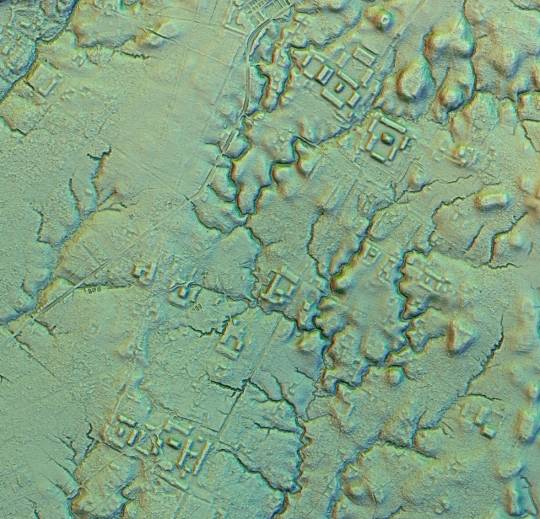
According to archaeologist Jay Silverstein, a senior lecturer at Nottingham Trent University in England, this method allows researchers to create a terrain model of the ground underneath the forest.
"You've basically skimmed off all the trees and you're actually looking at the shape of the earth," he told Galloway. "Then we start to be able to see the patterns of what we call anthropogenic, or things that were made by humans as opposed to nature."
For Rostain, this method is indispensable because it allows the exact shape and size of the ground to be reconstructed without harming the forest itself.
Rostain says nothing gets destroyed by LiDAR, noting that the technology maps out the terrain without cutting trees or destroying the archaeological site. "It's just perfect."
Silverstein said science can indeed be destructive, as damage created during excavation can't be undone. That's why using non-destructive archaeology like LiDAR is extremely important.
"We are developing more and more non-destructive techniques that allow us to to plan our excavations much better to understand what we're looking at and on the large scale before we do our small-scale excavations," he said.
Humankind's potential — and fragility
As significant as this discovery is, Silverstein warns against making any assumptions about this civilization based on first impressions.
"When I teach students or younger archaeologists, I tell them that your first impression, your gut instinct, your feeling of what you see when you first see, it is wrong," he said.
What's at stake for the climate, deep in the Amazon
The Amazon rainforest plays a crucial role in regulating the global climate, but it’s under serious threat from deforestation. CBC's international climate team ventures deep into the forest with scientists to learn how climate change is affecting it, and what’s at stake in the fight to save it.
In this case, Silverstein said assumptions shouldn't be made about what the geometric shapes revealed by LiDAR represent.
"You don't know if you're really talking about palace plazas or agricultural fields when you see a rectangular shape in the ground," he said. "There's a big difference of what it means when understanding that society."
Nevertheless, these findings are confirmation of humanity's potential, said Silverstein.
"Whether you're we're dealing with Highlanders in Papua New Guinea or villagers in Mexico … we adapt to our environments, we figure ways to organize ourselves," he said.
"And given the opportunity and the resources and good fortune, we will organize ourselves and create more complex societies and we'll figure out how to better manage our water and build roads and build houses."
How recreating ancient recipes helps one food buff bring the past to life
Lessons from an ancient Athenian in an era of 'fake news'
There may be a grim lesson to be learned from these findings, according to Silverstein: civilization is fragile, and there's no guarantee that our societies will be around in the future.
"Everyone who lived in those ancient societies thought their society was fine and that they were going to live on forever, and that their children would live there and their grandchildren and so on," he said. "But something happened and it didn't."
"We blithely go through life and we get our warnings of climate crisis and warfare and threats. But we more or less assume that we're going to be here tomorrow and living just like we do today —until it happens."
ABOUT THE AUTHOR
Mouhamad Rachini
Journalist
Mouhamad Rachini is a Canadian-Lebanese writer and producer for CBC Radio's digital team. He's worked for several CBC Radio shows including The Current, Day 6 and Cross Country Checkup. He's particularly passionate about stories from Muslim and Middle Eastern communities. He also writes about soccer on his website Between the Sticks. You can reach him at [email protected].
#archaeology#indigenous#ancient civilizations#amazon culture#indigenous archaeology#amazon archaeology#LIDAR
9 notes
·
View notes
Note
Hi Reid, my university is in the process of adding an archaeology curriculum (I don't know if it will be it's own program or integrated into the anthropology department, my professor just mentioned it in lecture) and one of the concerns among the faculty (according to my professor) is that the archaeology courses would promote and focus on decolonization (this is also a goal of the current anthropology curriculum but there are some roadblocks due to university bureaucracy). But the talk of the new archaeology curriculum and decolonization made me curious about your thoughts on current decolonization efforts within archaeology.
There's a lot of really great work being done by both Indigenous people and their non-Indigenous allies to decolonize archaeology.
Someone that I admire greatly is Dr. Sonya Atalay, whom I featured in my post about Indigenous People's Day. For a really great in-depth discussion about decolonizing archaeology, go read her article Indigenous Archaeology as Decolonizing Practice.
Decolonizing archaeology is both difficult and necessary. North American archaeologists have to grapple with the fact that our discipline is historically colonial and exploitative (for more detail, check out Skull Wars. The language is sometimes a little outdated, but it's still worth the read). I'm glad that your school is aware of the struggle as it creates an archaeology program.
-Reid
80 notes
·
View notes
Text
having old archaeologists as professors is pretty cool. sometimes they'll just go on a rant and talk about how they met so-and-so famous archaeologist during some conference in the stone age and how some white feminist cultural anthropologist got pissed at a radical sioux archaeologist for calling them a bunch of racist dicks
#margaret mead#vine deloria#custer died for your sins#god is red#archaeology#anthropology#indigenous archaeology
7 notes
·
View notes
Text
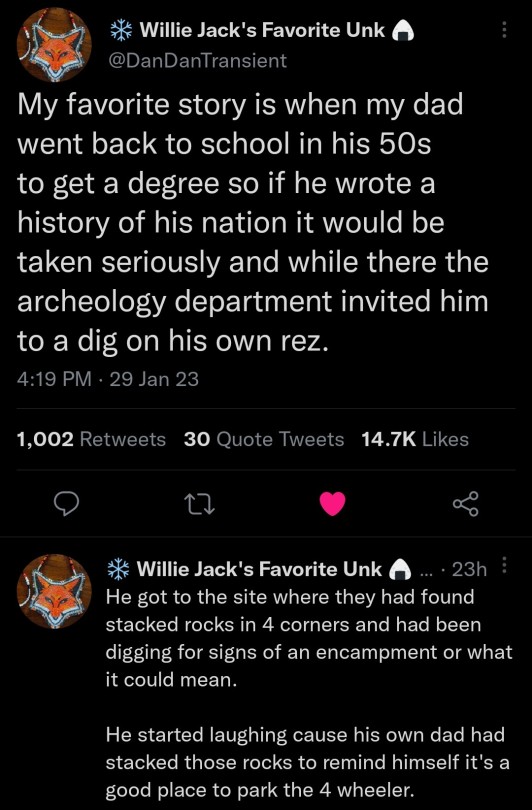
75K notes
·
View notes
Text


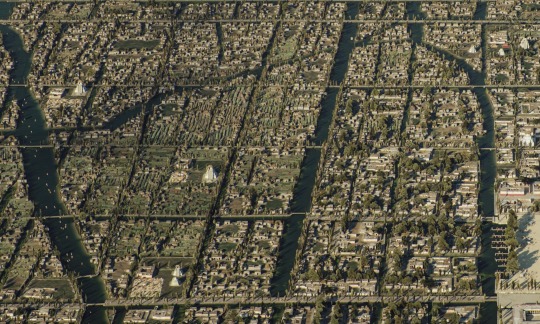
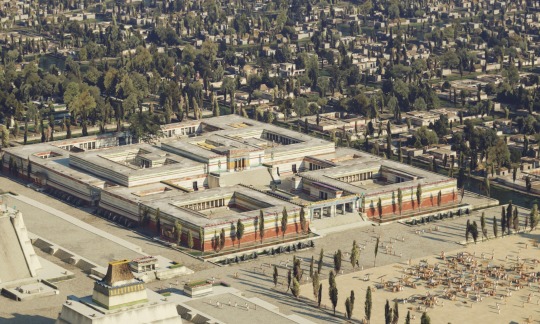
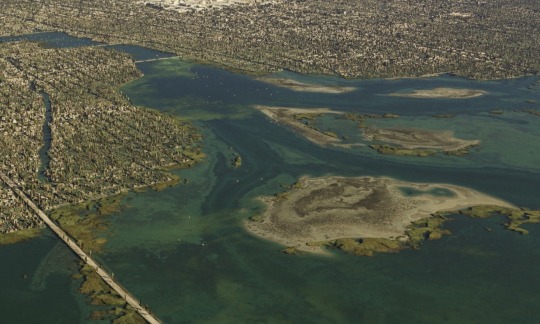
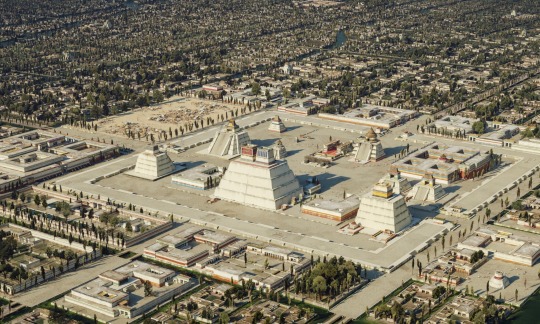
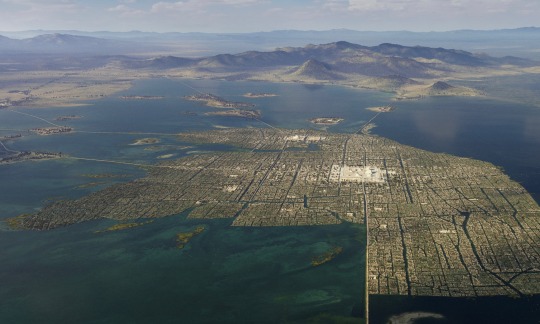
3D Reconstruction of Tenochtitlán by Thomas Kole
#history#art#mesoamerica#archaeology#antiquities#mexico#aztec#indigenous#indigenous history#precolumbian#precolumbian art#tenochtitlan#my posts
9K notes
·
View notes
Link
Columnists from CBC Radio - April 12, 2022: Why First Nations and Métis communities likely won't dig up unmarked graves
#first nations#métis#residential schools#indian residential schools#indigenous archaeology#indigenous people#anti-indigenous racism#settler colonialism in canada#violence of settler colonialism#canadian history#residential school denialism#indigenous history
0 notes
Text

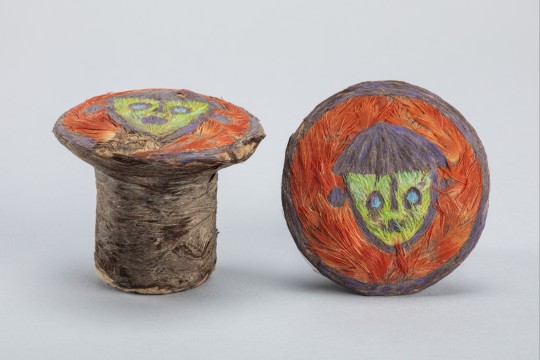
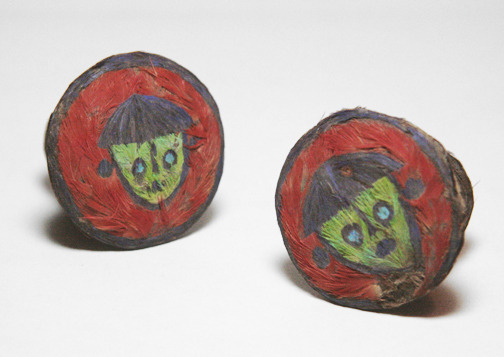
~ Pair of Ear Spools.
Date: A.D. 1000-1470
Place of origin: Central Coast, Perú
Culture: Chancay or Inca
Period: Late Intermediate-Late Horizon
Medium: Feathers, adhesive, gourd, and leather.
#history#museum#archeology#archaeology#pre columbian#12th century#15th century#peruvian#peru#south america#pair of ear spools#chancay#inca#indigenous#central coast#horizon period#intermediate period#feathers#a.d. 1000#a.d. 1470
360 notes
·
View notes
Text
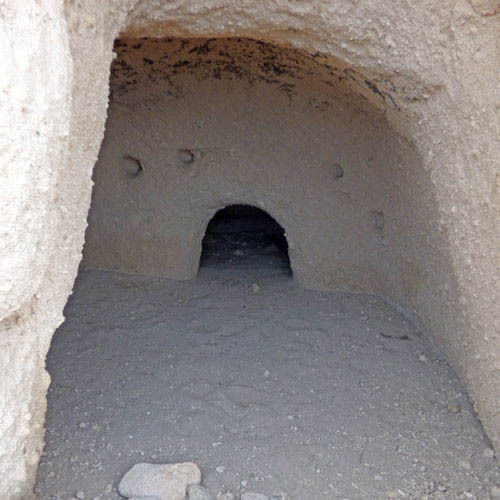
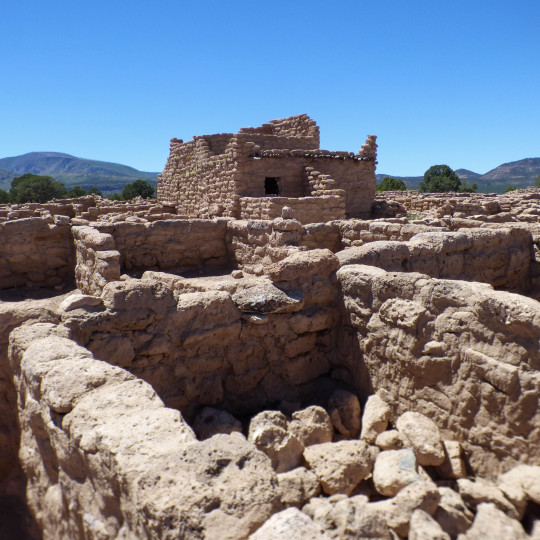
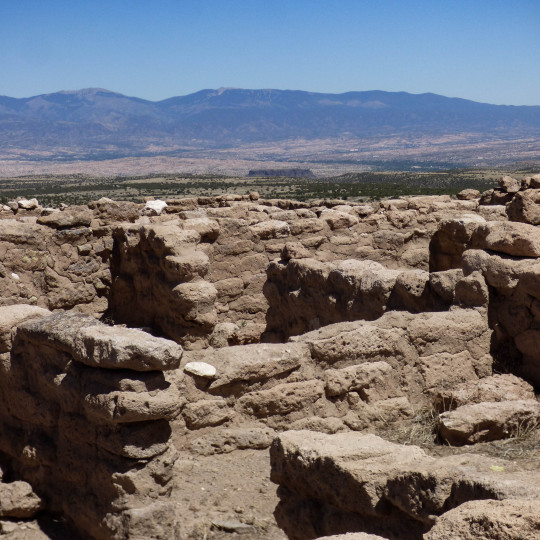
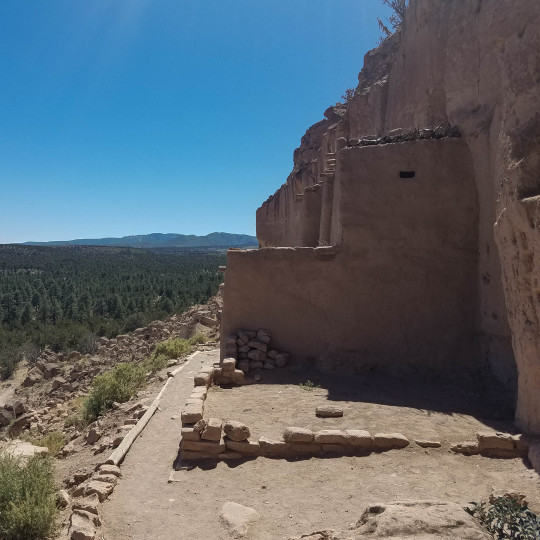

Puye was one of the ancestral villages of Santa Clara, San Ildefonso and Ohkay Owingeh Pueblos, occupied from about 900 AD to 1580 AD. The site was declared a National Historic Landmark in 1966. There are extensive ruins at the base of the cliffs and on top of the mesa, with outstanding examples of early Pueblo architecture and stunning panoramas of the Rio Grande valley. The sheer number of cliff dwellings at Puye, and how far they extend, is overwhelming, indicative of a large community.
#roadtrip#NativeAmerican#Puebloan#history#heritage#tradition#culture#daytrip#virtualtravel#NewMexico#historygeek#offthebeatentrack#leavenotrace#joltyourjourney#earthshotz#rockart#petroglyphs#indigenous#archaeology#anthropology#originalcontent#photography
390 notes
·
View notes
Text
Mysterious skeleton found in Hernán Cortés' palace revealed to be Indigenous woman, not Spanish monk

A skeleton visible within a burial at the entrance of the palace of Hernán Cortés —the Spanish conquistador who caused the fall of the Aztec Empire — is not the remains of a Spanish monk as was long thought. Instead, a new analysis reveals that the bones belonged to a middle-aged Indigenous woman.
When a powerful magnitude 7.1 earthquake rattled the Mexican states of Puebla and Morelos as well as Mexico City in 2017, buildings collapsed and thousands of people were injured. The Palace of Cortés, which was built by 1535 and now serves as a museum, was severely damaged, requiring extensive repair work that was completed in early 2023. During this work, researchers took stock of all objects within the museum, including an open burial exhibited at the entrance to the palace. Read more.
377 notes
·
View notes
Text
A huge ancient city has been found in the Amazon, hidden for thousands of years by lush vegetation.
The discovery changes what we know about the history of people living in the Amazon.
The houses and plazas in the Upano area in eastern Ecuador were connected by an astounding network of roads and canals.
The area lies in the shadow of a volcano that created rich local soils but also may have led to the destruction of the society.
While we knew about cities in the highlands of South America, like Machu Picchu in Peru, it was believed that people only lived nomadically or in tiny settlements in the Amazon.
"This is older than any other site we know in the Amazon. We have a Eurocentric view of civilisation, but this shows we have to change our idea about what is culture and civilisation," says Prof Stephen Rostain, director of investigation at the National Centre for Scientific Research in France, who led the research.
"It changes the way we see Amazonian cultures. Most people picture small groups, probably naked, living in huts and clearing land - this shows ancient people lived in complicated urban societies," says co-author Antoine Dorison.
The city was built around 2,500 years ago, and people lived there for up to 1,000 years, according to archaeologists.
It is difficult to accurately estimate how many people lived there at any one time, but scientists say it is certainly in the 10,000s if not 100,000s.
The archaeologists combined ground excavations with a survey of a 300 sq km (116 sq mile) area using laser sensors flown on a plane that could identify remains of the city beneath the dense plants and trees.
—
"The road network is very sophisticated. It extends over a vast distance, everything is connected. And there are right angles, which is very impressive," he says, explaining that it is much harder to build a straight road than one that fits in with the landscape.
The scientists also identified causeways with ditches on either side which they believe were canals that helped manage the abundant water in the region.
There were signs of threats to the cities - some ditches blocked entrances to the settlements, and may be evidence of threats from nearby people.
Researchers first found evidence of a city in the 1970s, but this is the first time a comprehensive survey has been completed, after 25 years of research.
It reveals a large, complex society that appears to be even bigger than the well-known Mayan societies in Mexico and Central America.
—
Some of the findings are "unique" for South America, he explains, pointing to the octagonal and rectangular platforms arranged together.
The societies were clearly well-organised and interconnected, he says, highlighting the long sunken roads between settlements.
Not a huge amount is known about the people who lived there and what their societies were like.
Pits and hearths were found in the platforms, as well as jars, stones to grind plants and burnt seeds.
—
Prof Rostain says he was warned against this research at the start of his career because scientists believed no ancient groups had lived in the Amazon.
#indigenous#the amazon#anthropology#archaeology#south america#turtle island#the amazon rainforest#its the bbc so it still is eurocentric#but bolding and sharing some parts that are interesting#white scientists could save so much time by not assuming shit#i think thats part of the scientific method#some of the language is a bit iffy to me too#i dont really enjoy when non natives get to ‘discover’ something that has always been there#and was made and mightve known about by any local tribes#but hey this is cool~#and more proof that we’ve been here longer than colonizers wanna think
243 notes
·
View notes
Text
Footprints scattered across what is now the desert of New Mexico were trod by human feet no earlier than 21,500 years ago, new research has confirmed.
The venerable age of these ancient traces in White Sands, New Mexico was revealed in 2021, to much awe and more than a little skepticism. Now, a team including some of the same scientists has performed more rigorous dating, confirming the controversial result.
It now seems more likely than ever that humans were, indeed, present in what is now North America during the Last Glacial Maximum.
Continue Reading.
358 notes
·
View notes
Text
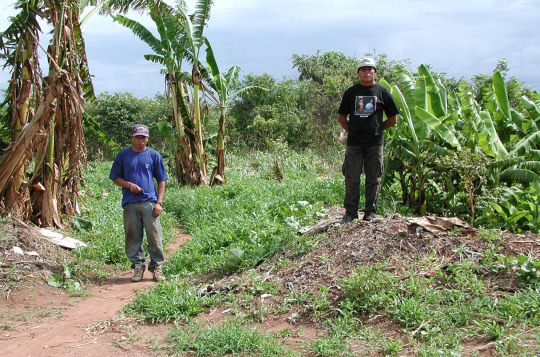
Ancient Amazonians created mysterious ‘dark earth’ on purpose
Soil study suggests today’s Indigenous Amazonians are making new terra preta
Mysterious patches of fertile black soil pepper the verdant Amazon rainforest. They sit in stark contrast with the reddish, eroded soil that dominates the basin.
Researchers have long thought this Amazonian dark earth—or terra preta—was created by pre-Hispanic Indigenous civilizations, which have inhabited the region for millennia, but it wasn’t clear how.
Now, a multidisciplinary team of scientists and Indigenous partners suggests the ancient Amazonians intentionally created the rich soil thousands of years ago to better foster their crops, and that their modern-day descendants are still making new terra preta today.
Read more: https://www.science.org/content/article/ancient-amazonians-created-mysterious-dark-earth-purpose
#terra preta#black soil#pedology#soil#ecology#ancient amazon#amazon#south america#indigenous people#archaeology
179 notes
·
View notes
Text
More Than 10,000 Indigenous Earthworks Hidden in the Amazon Reveal Human Connections to the Forest Over Millennia (9 images)
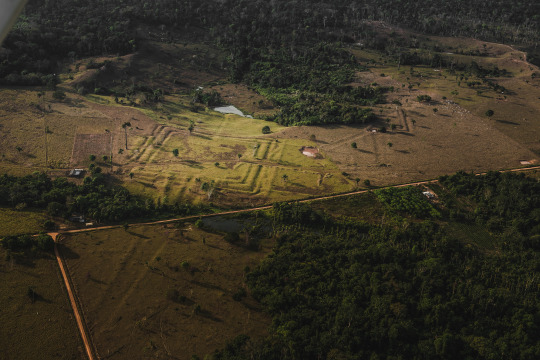
177 notes
·
View notes
Text
A really good article, demonstrating some of the ways archaeologists work to support the rights of Indigenous people, and unfortunately also some of the ways we fail at it.
58 notes
·
View notes
Text
The history of Coast Salish “woolly dogs” revealed by ancient genomics and Indigenous Knowledge
81 notes
·
View notes
Text
Centuries of indigenous presence in the Amazon defy legal attempts to limit the rights of Brazil’s native peoples
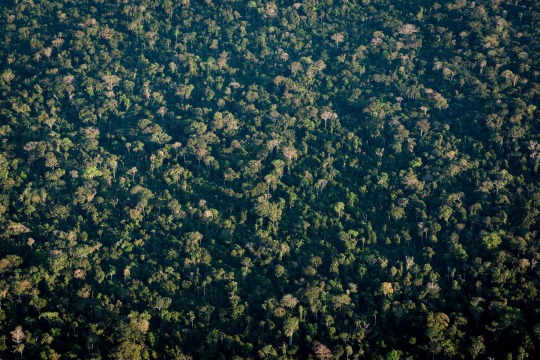
A study made by Brazilian researchers and published on October 5 in the renowned scientific journal Science, one of the world’s most respected academic journals, has found solid evidence that a significant part of the Amazon region has been inhabited by traditional indigenous peoples for at least 12,000 years.
Over the course of five years of research, Vinícius Peripato and Luiz Aragão managed to identify the existence of 24 uncatalogued and completely unknown archaeological sites hidden beneath the forest.
Peripato, a geographer, holds a master’s degree in Remote Sensing from the National Institute for Space Research (INPE) and is about to complete his doctorate in the same field and institution. He is supervised by Professor Luiz Aragão, who holds a master’s and doctorate in Remote Sensing from INPE and co-authored the publication.
In order to understand every detail of this work, which tends to trigger profound reflections on some of the issues currently being debated in the country, such as the right of indigenous peoples to claim ownership of their traditional lands, Brazil Reports spoke to the two researchers.
Continue reading.
#brazil#politics#environmental justice#science#archaeology#brazilian politics#indigenous rights#mod nise da silveira#image description in alt#amazon rainforest
83 notes
·
View notes